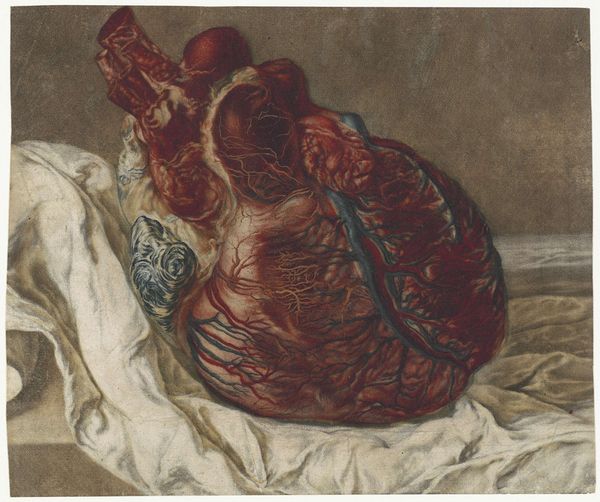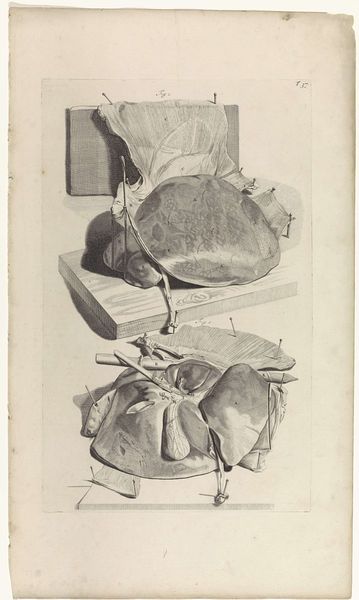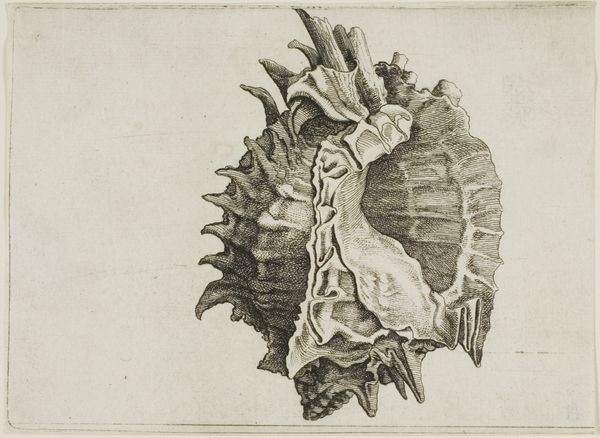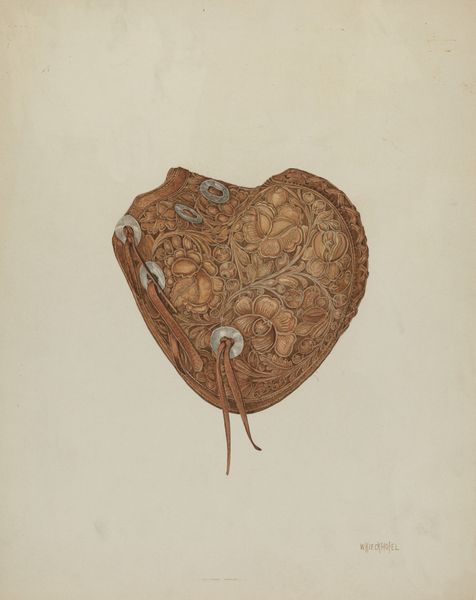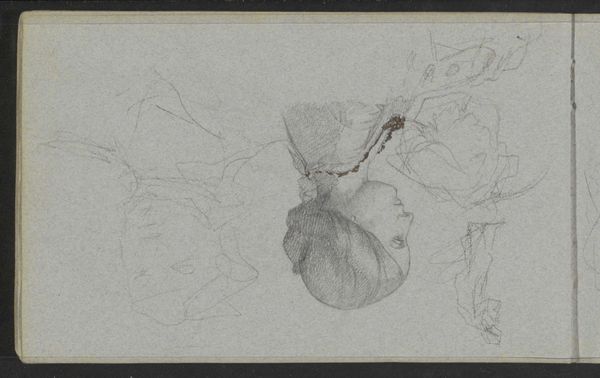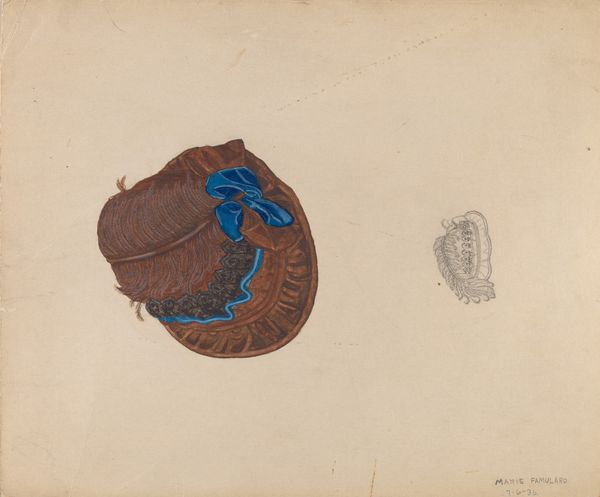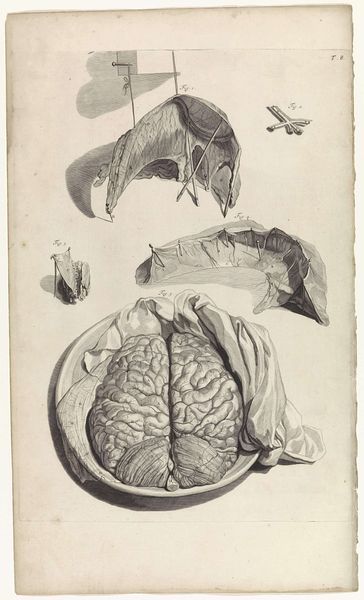
drawing, coloured-pencil, print, ink, pen
#
portrait
#
drawing
#
coloured-pencil
#
baroque
# print
#
ink
#
coloured pencil
#
pen
#
history-painting
#
academic-art
#
realism
Dimensions: height 193 mm, width 227 mm
Copyright: Rijks Museum: Open Domain
Curator: So, here we have Jan L’Admiral's “Prints of the Brain and the Heart,” created sometime between 1700 and 1750. It’s a striking anatomical drawing, employing ink, coloured pencil, pen, and print techniques. Editor: It's fascinating and quite graphic. It seems like a blend of scientific illustration and artistic interpretation. The raw, almost visceral, quality of the heart and brain is immediately apparent. What do you see as being most important about this piece? Curator: What I see here is a potent illustration of the intertwined development of scientific inquiry and artistic practice during the Enlightenment. How did artists and society begin looking at and interpreting scientific discoveries? Here, the clinical detachment required for anatomical study sits in tension with the inherent symbolism of the heart and brain, organs closely tied to emotion and intellect, right? Editor: Right, they are presented more than clinical organs. There are hints of emotional weight. Do you think that relationship was on the artist's mind, as he depicted the physical and maybe the conceptual meaning? Curator: Absolutely. The very act of creating such detailed prints democratized scientific knowledge. Previously confined to academic circles, knowledge could be distributed to a wider audience through printed images. That increased access transforms the relationship the public has with science. Does that impact its political context, potentially? Editor: So, it's not just art for science, but science entering the public consciousness and sparking wider dialogues. I never considered the social role of early scientific drawings in this way. Thank you. Curator: Indeed! It highlights how art shapes public understanding and how scientific visualizations impact cultural perspectives. The print's lasting value resides in its power to generate such thought-provoking dialogues even now.
Comments
rijksmuseum about 2 years ago
⋮
Around 1735 Jan l’Admiral printed several remarkable anatomical prints in colour, among others on commission for the celebrated physician Frederik Ruysch. For his illustrations of the cerebral membrane (the skull of an unborn child) and a human heart he experimented with ever different colours, and made various versions of them. The objective was to provide medical practitioners with the most precise and realistic images possible.
Join the conversation
Join millions of artists and users on Artera today and experience the ultimate creative platform.
